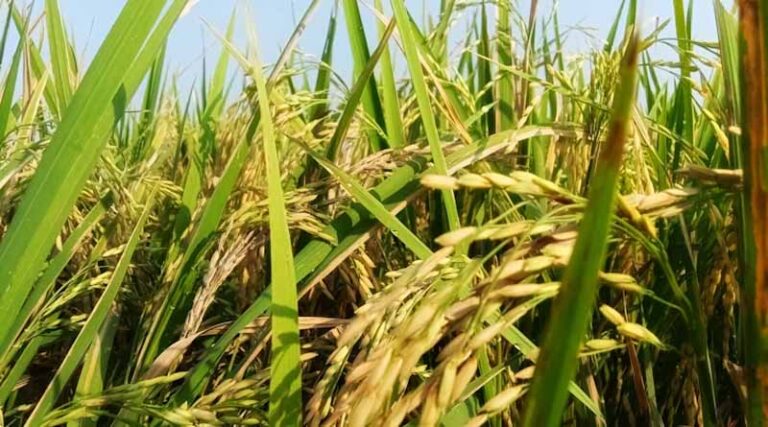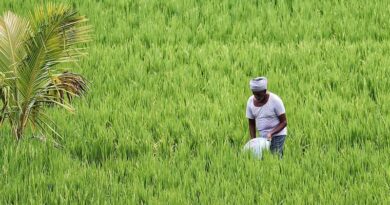
Tradition in the Grain, Innovation in Practice: India’s Basmati at a Crossroads
Guest Author – Amit Goel, Founder and Group MD of KNAM Group
15 October 2025, New Delhi: Having spent years working closely with the people and processes behind Indian Basmati rice, I’ve come to appreciate something extraordinary. This isn’t just a crop; it’s a living blend of deep-rooted tradition and fresh, innovative thinking – and that balance is what keeps India at the top globally. The past year, 2024-25, really highlighted that spirit of resilience and adaptability amidst changing times.
The distinctiveness of Indian Basmati is its long, slender grain, the nutty aroma, and the characteristic elongation after cooking. It is rooted in the soils and climate of the Indo-Gangetic plains. Punjab, Haryana and Western Uttar Pradesh are the principal growing regions, and the Geographical Indication (GI) remains a crucial marker of authenticity and provenance for buyers worldwide. India officially notifies dozens of Basmati varieties under the Seeds Act, and the sector’s export success rests on a few marquee cultivars -notably Pusa.
Last year’s export numbers tell a promising story. We shipped out over 60 lakh metric tonnes worth nearly $6 billion to 154 countries, a testament to how well coordinated the industry has become, from farmers to exporters to regulators. While the Middle East remains a loyal customer, it’s exciting to see demand from Europe, North America, Africa, and Southeast Asia growing strong, helping Indian Basmati touch more tables worldwide.
Of course, it’s not all smooth sailing. Different countries have their own rules about pesticide residues, especially strict in the European Union, where even a tiny trace can cause headaches. That means every step, right down to the farmer’s field, needs care and attention. The sector has stepped up big time, with better testing, educating farmers on safer pest control, and tighter tracking systems. Without this, we simply couldn’t meet the toughest standards and keep trade flowing.
And just when you think you have a handle on things, new challenges pop up. The 50% tariff introduced by the United States has materially raised landed costs and weakened price competitiveness especially in a strategically important market. This shows how quickly shifting policies can change the game, and why staying nimble is key. Despite facing such headwinds, the sector is committed and stands strong.
Innovation is also happening everywhere you look. From labs testing for residues to farmers adopting smarter cultivation and conserving water, progress has become part of the daily routine. Indian exporters have embraced innovations such as vacuum-sealed packaging, digitally tracked barcodes, and temperature-managed storage. These advances limit spoilage, guarantee longer shelf-life, and deliver confidence to overseas buyers who want transparency and sustainability as much as great taste.
Crucially, such modernization is supported by a collaborative network. Government agencies, trade associations, and export development foundations provide both institutional momentum and targeted interventions. Recent years have seen expanded incentive schemes, infrastructure upgrades, and bilateral dialogues that reduce red tape, making it easier for exporters to navigate complex market-entry requirements.
Looking ahead, new markets in Africa and Southeast Asia are opening up, with rising incomes and expanding retail chains creating fresh demand. Analysts expect global Basmati consumption to grow by around 6-7% annually, cruising toward a $12 billion market by 2030. Indian exporters, too, can aspire to ship more than 80 lakh metric tonnes, if they continue investing in research, digital tools, and environmentally responsible farming.
If there’s a single strategic imperative from 2024-25, it’s the diversification of markets, of farm practices, and of value-chain capabilities. Sustained success will come from marrying the intangible heritage of Basmati with practical, science-led improvements across agronomy, testing, packaging and policy advocacy. With quality as the non-negotiable foundation, and collaboration as the engine, Indian Basmati can maintain its global leadership and scale responsibly into new geographies and consumer segments.
Also Read: The Quiet Power of Biostimulants: Missing Link in Regenerative Agriculture
📢 If You’re in Agriculture, Make Sure the Right People Hear Your Story.
From product launches to strategic announcements, Global Agriculture offers unmatched visibility across international agri-business markets. Connect with us at pr@global-agriculture.com to explore editorial and advertising opportunities that reach the right audience, worldwide.






